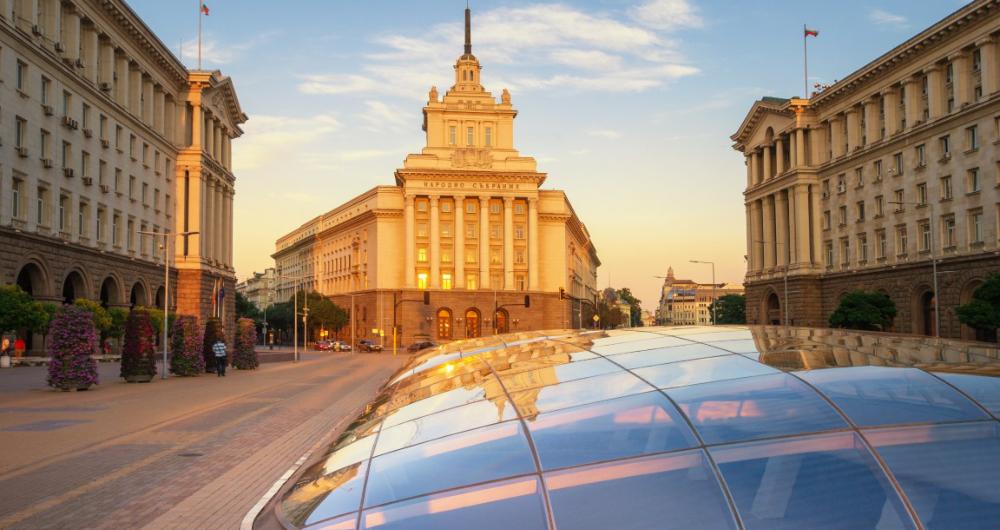In This Article
Need a historic yet vibrant European getaway? Head to Sofia! Discover ancient Roman ruins, Orthodox cathedrals, trendy cafés, and lively parks all wrapped in scenic mountain views. Whether you're craving culture, history, or affordable adventure, Sofia offers a perfect blend of old-world charm and modern flair.
Sofia, Bulgaria Highlights:
- Alexander Nevsky Cathedral: Admire the grand golden domes and intricate mosaics of Sofia’s most iconic landmark.
- Vitosha Boulevard: Shop, dine, and people-watch along Sofia’s main pedestrian street lined with boutiques and restaurants.
- Boyana Church: Visit this UNESCO World Heritage Site famous for its medieval frescoes and historic significance.
- Vitosha Mountain: Hike, ski, or ride the cable car to enjoy panoramic views of the city and fresh mountain air.
- Roman Ruins of Serdica: Explore ancient Roman streets and structures seamlessly integrated into modern downtown Sofia.
Best Time to Visit
The best time to visit Sofia is during spring (April–June) and early fall (September–October). Mild temperatures, blooming parks, and fewer crowds make these seasons ideal for sightseeing and outdoor activities.
How to Get There
- If you are traveling by air: Fly into Sofia Airport (SOF), located about 10 kilometers (6 miles) east of downtown, with easy metro and taxi access.
- By Train: Sofia Central Railway Station connects with cities across Bulgaria and neighboring countries like Serbia and Romania.
- By Car: Sofia is well-connected by highways if you're traveling from elsewhere in Bulgaria or the Balkans.
Where to Stay
- Sense Hotel Sofia – Sleek, luxury hotel with rooftop bar views of the Alexander Nevsky Cathedral.
- InterContinental Sofia – Elegant hotel with prime location overlooking Parliament Square and quick access to city sights.
- Hotel Niky – Affordable, cozy hotel with a garden restaurant, located near Vitosha Boulevard.
Best Things to Do
1. Marvel at Iconic Domes and Grand Interiors at Alexander Nevski Cathedral
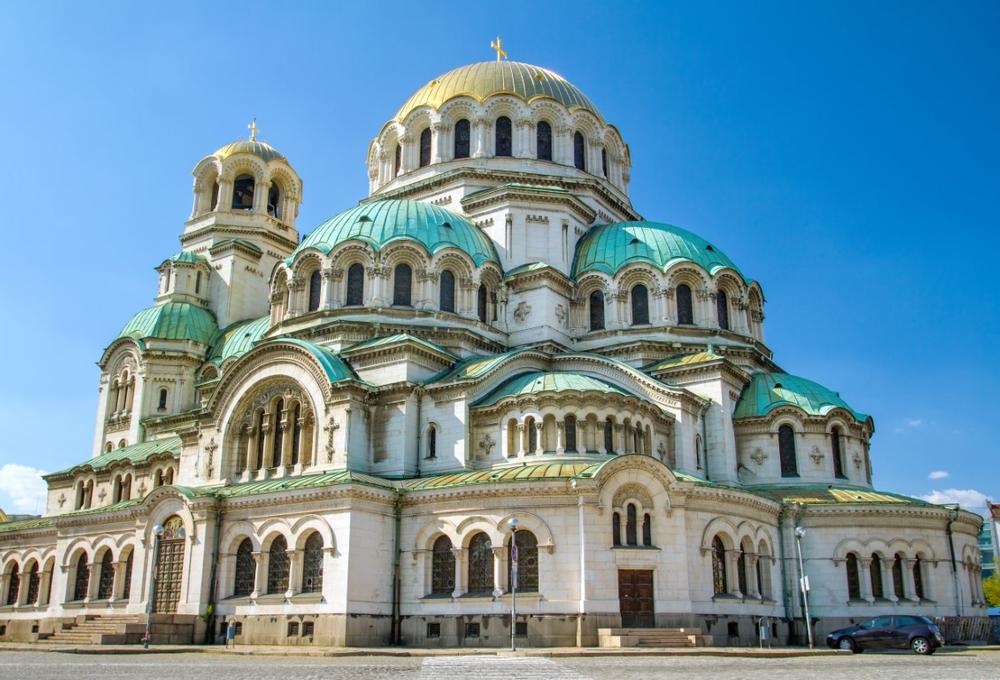
© Mazur Travel/stock.adobe.com
The St. Alexander Nevsky Cathedral is a Bulgarian Orthodox cathedral dating back to the 1880s and serves as the cathedral church of the Patriarch of Bulgaria. Located in the heart of Sofia, the cathedral is the second-largest cathedral in the Balkan region and an excellent example of Sofia’s grand architecture, featuring gilded domes, stone carvings, soaring arches, and intricate mosaic murals. Designed in the Neo-Byzantine style, the church boasts materials from around the world, including marble from Munich, metal from Berlin, and handmade mosaics from Venice. A museum is located within the Alexander Nevski Cathedral crypt in the basement and is home to a significant collection of Orthodox icons and masterpieces. The St. Alexander Nevsky Cathedral can hold 10,000 people and is one of the largest Eastern Orthodox cathedrals in the world.
pl. "Sveti Aleksandar Nevski," 1000 Sofia Center, Sofia, Bulgaria, Phone: +359-29-88-17-04
2. Walk Through Ancient Catacombs Beneath Saint Sophia Basilica
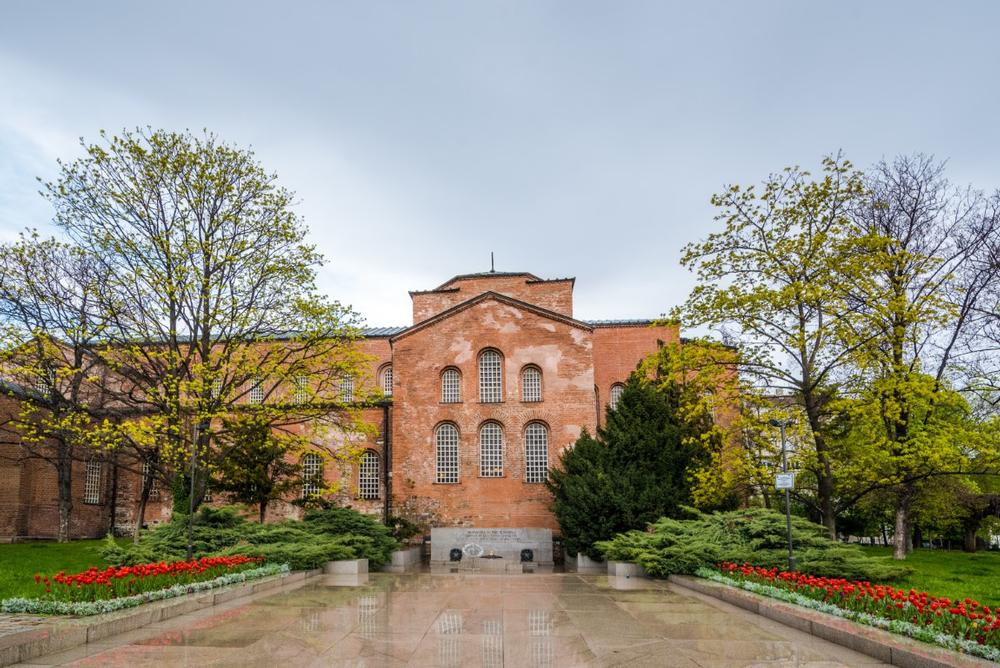
© miladrumeva/stock.adobe.com
The Basilica of Saint Sophia is a quaint red-brick church that gave the city of Sofia its name in the 1300s during the Second Bulgarian Empire. Built in Roman times, the unassuming church once served as a fire-brigade tower and a mosque and boasts a vast labyrinth of ancient tombs and tunnels beneath its floors. The centuries-old burial grounds under the church can be explored on guided tours with local historians who delve into the fascinating history of the church and its catacombs that date back more than 1500 years.
Saint Sophia Basilica’s Catacombs, 2, Paris Str. Sofia, Bulgaria
3. Shop, Dine, and Stroll Sofia’s Stylish Vitosha Boulevard
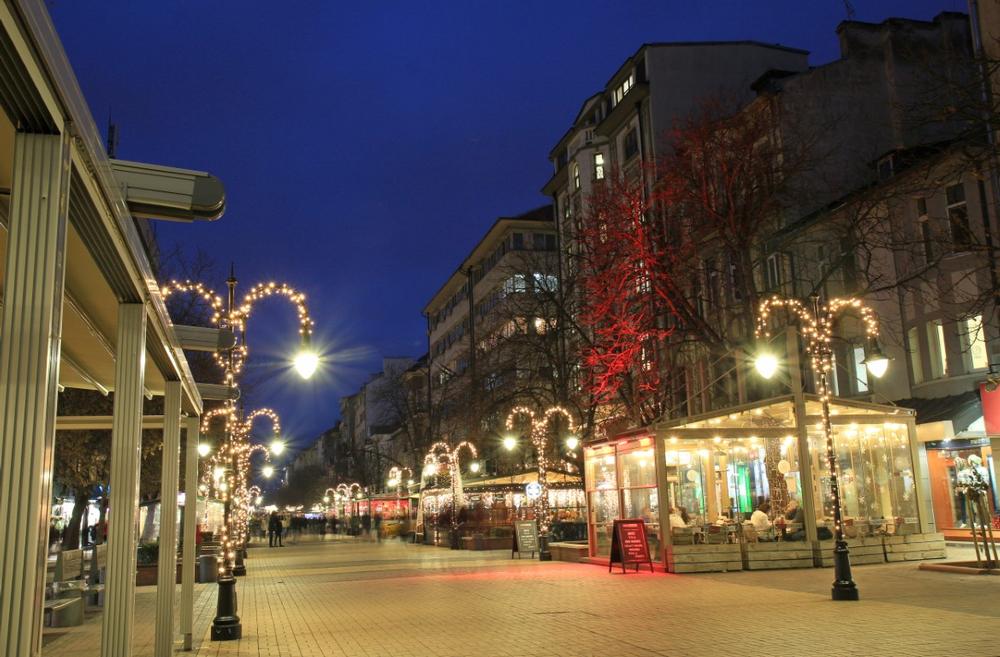
© dinar12/stock.adobe.com
Vitosha Boulevard is the main commercial street in the center of Sofia and extends from the St Nedelya Square to the Southern Park. Known as the fanciest street in the city, Vitosha Boulevard is lined with high-end fashion houses and posh boutiques, expensive restaurants and chic bars. Benches, kiosks, and lampposts are designed in an elegant Art Nouveau style, reminiscent of the Bulgarian Revival period. The boulevard boasts breathtaking views of Vitosha Mountain framed by the street’s tall buildings and is well worth exploring on a pleasant stroll.
Sofia, Bulgaria
4. If You Love Scenic Parks and Relaxed Walks, Wander Borisova Garden and Yuzhen Park
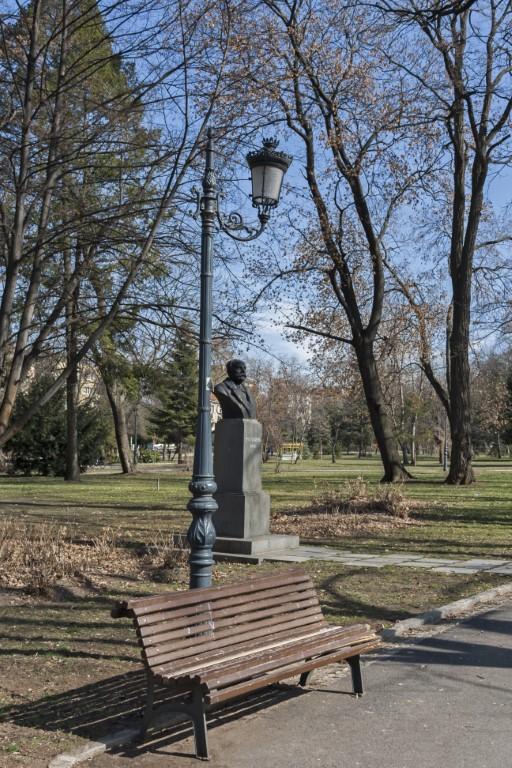
© Stoyan Haytov/stock.adobe.com
Borisova Gradina (Borisova Garden), also known as Knyaz-Borisova Gradina, is the largest and oldest park in Sofia. Nestled in the center of the city, the urban park was designed by Swiss landscape artist, Daniel Neff and constructed in 1884 as a small garden in the garden-esque style. Named after Bulgarian Tsar Boris III, the beautifully laid-out and manicured gardens were enlarged over the years with avenues, fountains, a rose garden, and a lake being added. Yuzhen Park (South Park) is another popular urban park in the city that plays host to a variety of outdoor events such as festivals, concerts, and outdoor cinema screenings in the summer.
Borisova Gradina (Borisova Garden) and Yuzhen Park (South Park), Sofia, Bulgaria, Phone: +359-29-63-45-66
Activities and Attractions for Couples:
5. Step Into Sofia’s Past at the Sofia History Museum
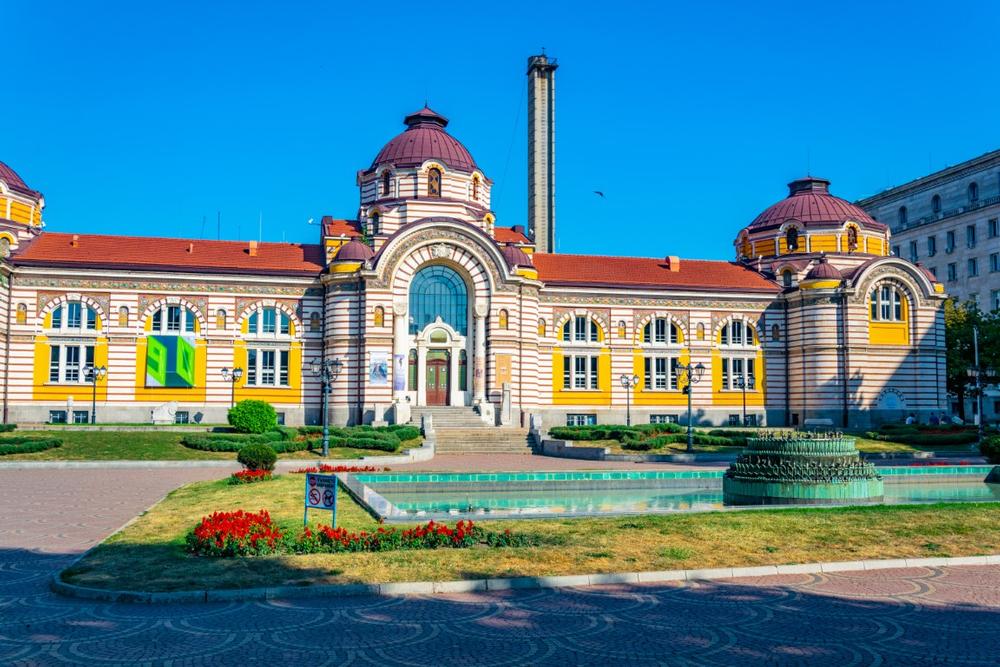
© dudlajzov/stock.adobe.com
The Sofia History Museum is dedicated to the history of the city from Roman times to modern-day. Housed in the magnificent former baths building, the museum features eight exhibition halls displaying a myriad of artifacts, items, and objects from 6000 BC to the present day. These include a golden carriage from Marie Antoinette, a reconstructed Neolithic house, a retro tram, a golden clock given to Prince Ferdinand by Queen Victoria, and one of the first cars in Sofia. The museum also hosts regular temporary exhibitions, and visitors can explore the institution on docent-led guided tours.
Old City Center, Sofia, Sofia City Province, 1000, Bulgaria, Phone: +35-929-85-44-55
6. Discover Bulgaria’s Rich Treasures at The National History Museum
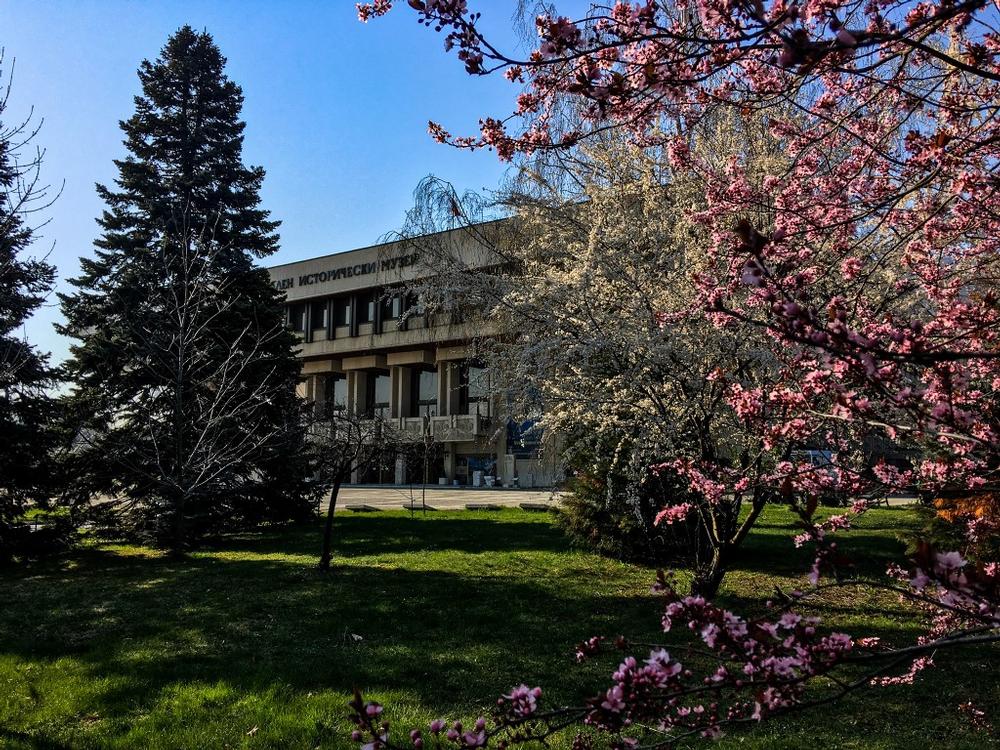
© The National History Museum
A visit to The National History Museum is an ideal way to learn all about the turbulent history of Bulgaria. Housed in the former dictator Todor Zhivkov’s residence, which is an excellent example of typical Stalinist architecture, the museum features numerous halls with tens of thousands of exhibits, documenting the history of the country from the First and the Second Bulgarian Kingdom to the age of Communism. Notable items in the museum’s vast collections include the world-famous golden Thracian treasure and 20th-century space research equipment.
16 ulitsa "Vitoshko lale," Boyana, Sofia, Sofia City Province, 1404, Bulgaria, Phone: +35-929-55-42-80
7. Experience Cultural Brilliance at Sofia’s National Opera and Ballet

© Velizar Gordeev/stock.adobe.com
The National Opera and Ballet is a national cultural institution in Bulgaria that hosts opera and ballet performances year-round. World-class opera performances are sung in their original languages with operas following a monthly program. Opera-lovers flock to see the Bulgarian opera singers, who are famous all over the world and tickets are very reasonable in comparison with other cities in Europe. During the summer, the National Opera and Ballet organize opera performances in parks and medieval fortresses all around the country.
30 Dondukov Blvd, ul. "Vrabcha," 1000 Sofia, Bulgaria, Phone: +359-29-87-70-11
8. If You Seek Powerful Symbols of Unity, Visit The Square of Religious Tolerance
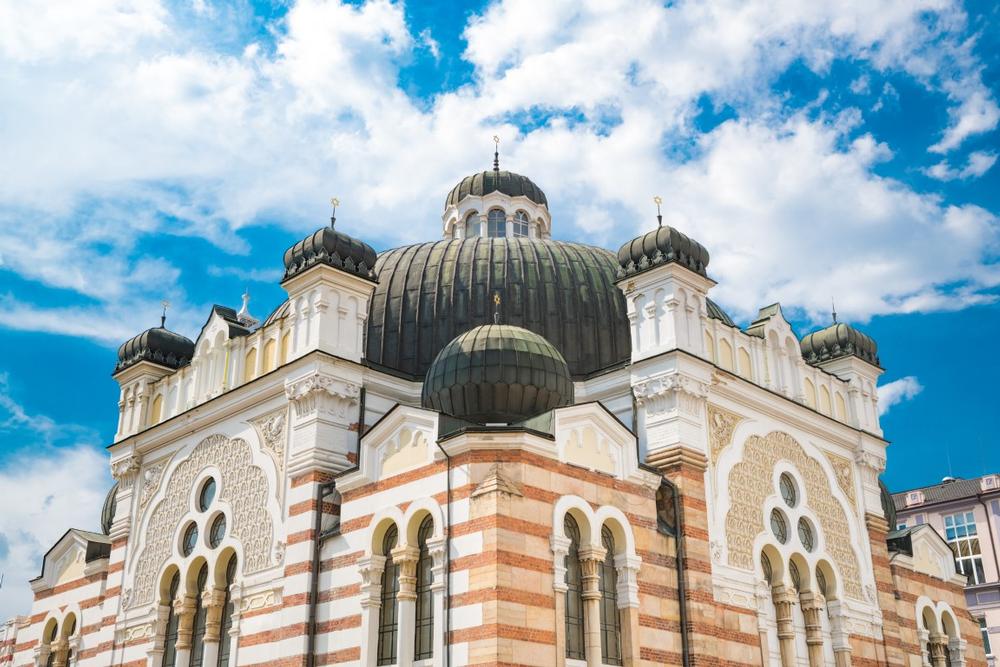
© Pavlo Khomenskyi/stock.adobe.com
The Square of Religious Tolerance is located in the heart of Sofia and is home to four places of worship for four major religions within a short walk of each other. These are the Sveti Yosif (Saint Joseph) Catholic Cathedral, the Saint Nedelya Orthodox Church, the Synagogue, and the Banya Bashi Mosque, each of which has its own rich history, character, congregations, and equally respected. The synagogue is the biggest Sephardic temple in Europe; the Banya Bashi Mosque was once part of the public baths complex; the Sveti Yosif Catholic Cathedral was destroyed during WW2 and was only recently rebuilt, and the Sveta Nedelya Orthodox Church was damaged by assault by the Communist Party in 1925.
Saint Nedelya Square, Sofia, Bulgaria
Where to Eat:
9. Savor Traditional Bulgarian Flavors with a Modern Twist at Shtastliveca
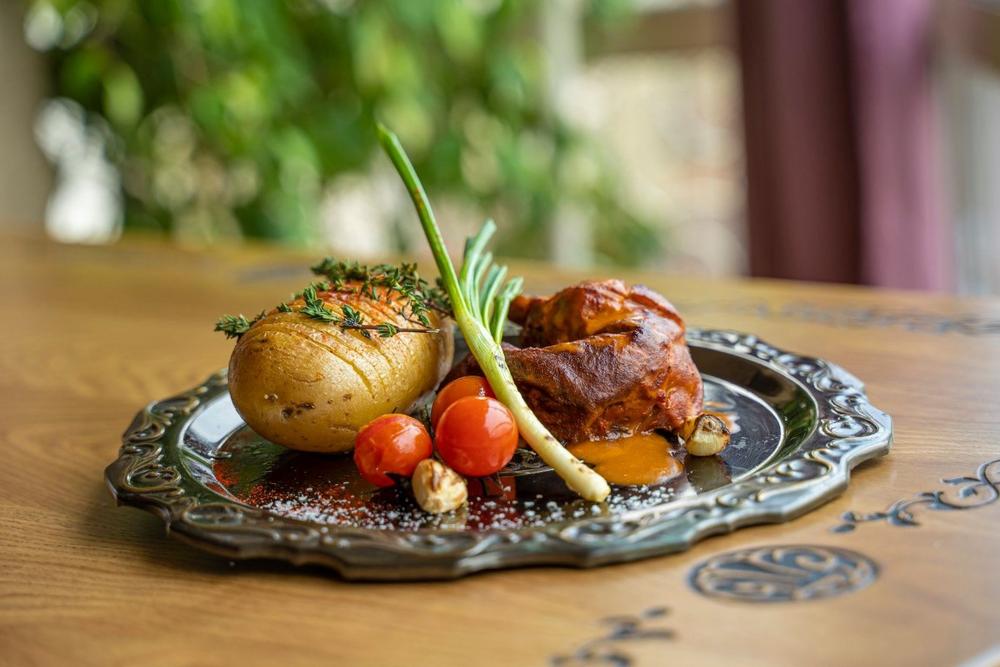
© Shtastliveca
Meaning ‘the lucky man,’
Shtastliveca is a famous restaurant with eateries in Veliko Tarnovo and Sofia that serves traditional Bulgarian cuisine and international dishes in a vibrant and welcoming setting. The friendly restaurant in Sofia has elegant décor and spectacular views over the city and serves a delicious lunch menu with signature dishes such as Bulgarian baked vegetable stew with tomatoes, red peppers, Bulgarian sirene white cheese and eggs, shopska salad, stuffed pepper with cheese and truffles, duck filets with lemon risotto, and pork with lemon and thyme. The food is paired with a selection of European wines, craft beers, and high-end spirits, and the restaurant is open for lunch and dinner.
27 boulevard "Vitosha," Sofia Center, Sofia, Sofia City Province, 1000, Bulgaria, Phone: +35-924-41-11-55
10. Grab a Relaxed Bite and Family-Friendly Flavors at Mr. Pizza
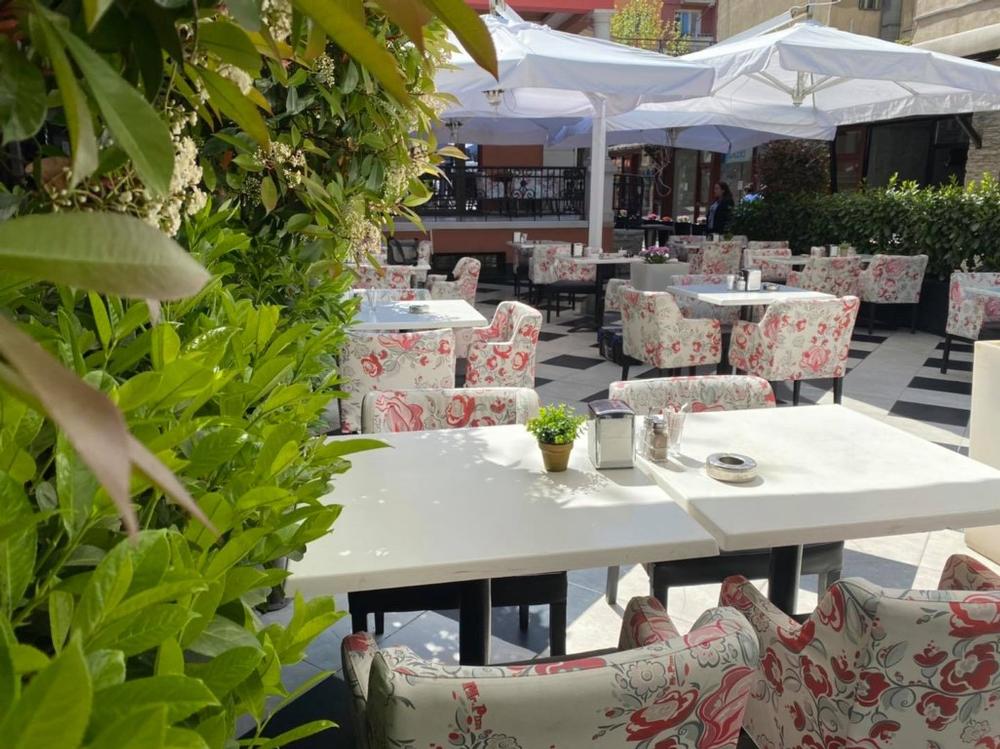
© Mr. Pizza
Mr. Pizza
is a casual restaurant chain in Sofia with three locations that serve a variety of Mediterranean fare, wood-fired pizzas, and traditional Bulgarian dishes in a relaxed and friendly setting. Restaurant locations can be found close to the National Palace of Culture, the Vitosha Boulevard, and the subway station, and offer a range of handmade pizzas with various toppings, fresh salads, pasta, kebabs and other meat dishes, and fresh seafood. The food is paired with a selection of European wines, craft beers, and high-end spirits, and the restaurant is open for lunch and dinner.
Three ulitsa "Verila," Old City Center, Sofia, Sofia City Province, 1463, Bulgaria, Phone: +35-98-95-61-61-11
More Places to Eat
- Made in Home – Cozy, artsy restaurant offering creative takes on Bulgarian and European comfort food.
- Hadjidraganov's Houses – Traditional Bulgarian dining experience with folk decor and hearty classics like kavarma and banitsa.
- Sasa Asian Pub – Popular spot on Vitosha Boulevard for sushi, fusion dishes, and lively atmosphere.
If you are interested in local events:
- Sofia Music Weeks (May–June) – Classical music festival featuring Bulgarian and international artists.
- Sofia Film Festival (March) – Bulgaria’s biggest film festival showcasing international and Balkan cinema.
- Christmas Market at the City Garden (December) – Festive market with crafts, mulled wine, and holiday entertainment downtown.
If you are looking for unique day trips within 30 Minutes of Sofia, Bulgaria:
- Dragalevtsi Monastery (20–30 min) – Visit a historic monastery nestled on the slopes of Vitosha Mountain.
- Pancharevo Lake (20–25 min) – Relax by the lakeshore, kayak, or hike scenic trails near the water.
- Boyana Waterfall (25–30 min) – Hike to a beautiful, secluded waterfall in the Vitosha foothills.
- National History Museum (20–25 min) – Explore Bulgaria’s fascinating history through rich collections housed in an impressive building.
- Lozen Monastery (25–30 min) – Peaceful monastery visit combined with light hiking in the surrounding nature.
Frequently Asked Questions:
-
Where is Sofia located?
-
Nestled below Vitosha Mountain in the west of the Balkan nation of Bulgaria, the capital city of Sofia is steeped in more than 2,000 years of history.
-
What historical influences shaped Sofia?
-
The city has seen occupations by the Greeks, the Romans, and the Ottomans, contributing to its rich and diverse heritage.
-
What architectural landmarks can visitors see?
-
Today, the ancient city is home to beautiful buildings from the Bulgarian Revival in the late-19th century and historic churches such as the St. George Rotunda Church, built by the Romans in the 4th century, and the Medieval Boyana Church with its incredible 13th-century frescoes.
-
What experiences can visitors enjoy in Sofia?
-
Relax in tranquil urban parks, dine on traditional Bulgarian cuisine, and soak up the rich heritage of the city on guided walking tours.
At a Glance:
| Best Time to Visit |
Places to Stay |
Tips for Visiting |
| Spring (March-May) – Pleasant weather and blooming parks. |
Sense Hotel Sofia – A modern boutique hotel with rooftop views. |
Visit Alexander Nevsky Cathedral – Admire one of the largest Eastern Orthodox cathedrals in the world. |
| Summer (June-August) – Warm and perfect for sightseeing. |
InterContinental Sofia – A luxurious stay in the city center. |
Explore Vitosha Mountain – Hike or take a cable car for stunning city views. |
| Fall (September-November) – Crisp air and vibrant autumn colors. |
Grand Hotel Sofia – A classic, elegant hotel with top-notch service. |
Walk along Vitosha Boulevard – Enjoy shopping, cafés, and a lively atmosphere. |
How did I do?
Is the article too broad, too narrow, or just right ? Do you like the presentation of photos and text? Let me know in the comments! If you want to see more in this location, I can put it on my editorial calendar. I'm listening!
Plan Your Trip


